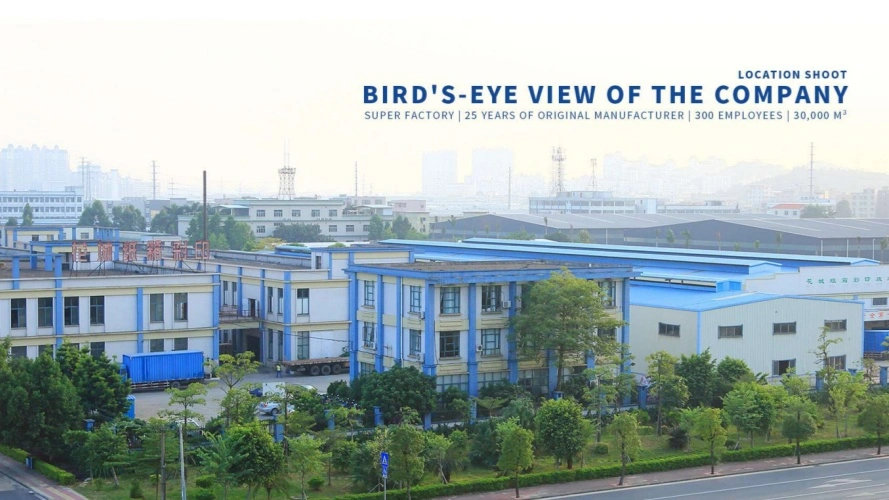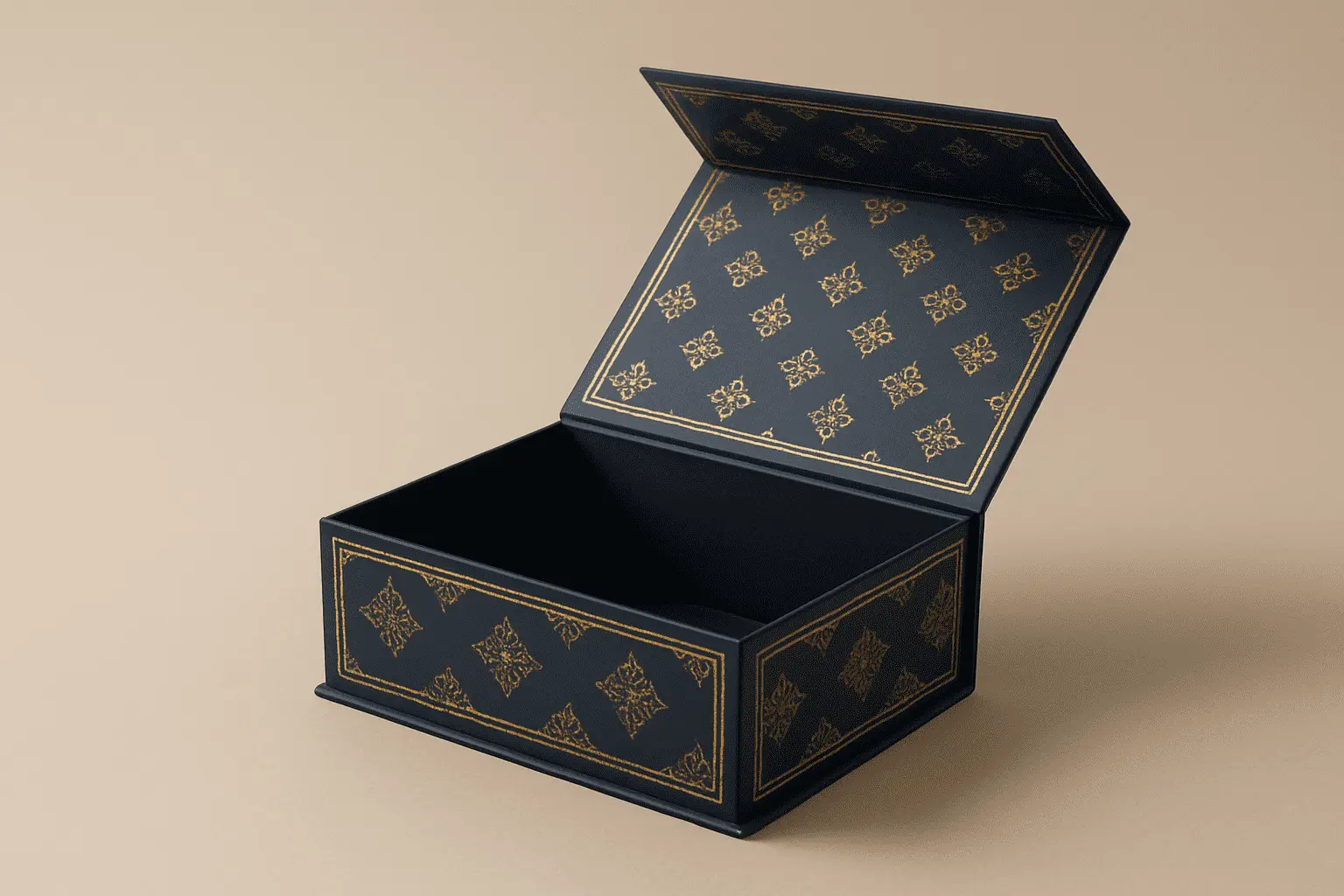Rigid Box vs Collapsible Rigid Box: Which Is Better for Luxury Gifts
Picture this scenario: you have invested thousands in premium gift inventory, yet your warehouse is bursting at the seams with pre-assembled packaging, and shipping costs devour your margins quarter after quarter. Meanwhile, your competitor launches sleeker packaging at half the logistics expense. The difference? They understand that choosing between a traditional rigid box and a collapsible rigid box is not just about aesthetics—it fundamentally reshapes your operational efficiency and bottom line while preserving that luxury unboxing experience your customers expect.

Understanding Rigid Box Construction and Applications
Traditional rigid boxes represent the gold standard in luxury packaging, engineered from heavyweight chipboard or duplex board that is typically three to four times thicker than standard folding cartons. These boxes maintain their structural integrity permanently, arriving at your facility fully assembled and ready to fill. The construction process involves wrapping printed specialty paper or fabric around the rigid chipboard core, then carefully gluing and finishing each edge to create seamless corners and surfaces. The fundamental strength of a rigid box lies in its multi-layer construction. Grey chipboard, manufactured by compressing recycled pulp under intense heat and pressure, forms the sturdy foundation. This base material exhibits exceptional resistance to bending and compression, which makes rigid boxes ideal for protecting delicate luxury items during handling and display. When you hold a traditional rigid box for cosmetics, jewelry, or premium electronics, you immediately sense the substantial weight and quality that communicates value to consumers.
-
Material Excellence in Traditional Rigid Box Production
Premium rigid box manufacturing relies heavily on superior substrate materials that determine both structural performance and visual appeal. SBS C2S paperboard, produced entirely from virgin bleached chemical pulp, provides an exceptionally bright white surface coated on both sides. This material enables vibrant color reproduction and supports advanced finishing techniques like hot foil stamping, embossing, and spot UV coating without compromising the structural integrity. The coating on both front and back surfaces ensures professional print quality regardless of which side faces outward, making SBS C2S particularly valuable for two-piece telescope boxes where interior presentation matters. Alternatively, CCNB offers an economical solution for brands requiring good print quality at competitive pricing. This clay-coated news back material features a white clay-coated front suitable for high-quality offset printing, while the grey recycled back provides adequate structural strength. Although the visible recycled content may not suit ultra-premium applications, CCNB works beautifully for mid-range gift packaging where sustainability credentials and cost efficiency align with brand positioning. The grey core contains high recycled fiber content, supporting environmental initiatives while maintaining sufficient rigidity for retail display and moderate shipping demands. For brands seeking authentic natural aesthetics, brown kraft paper delivers an earthy, rustic appearance that resonates with organic and handcrafted product positioning. Made from unbleached wood pulp, kraft paper retains visible fiber texture and natural brown coloration. Its high tensile strength and tear resistance make it remarkably durable for packaging applications, while treatments can enhance moisture resistance when necessary. The environmental advantages are substantial—kraft paper is completely recyclable and biodegradable, aligning perfectly with sustainable packaging goals that increasingly influence consumer purchasing decisions.
The Innovation of Collapsible Rigid Box Design
Collapsible rigid boxes revolutionize traditional packaging by introducing engineering innovations that maintain luxury presentation while dramatically reducing storage volume and shipping costs. Unlike conventional rigid boxes that occupy constant space regardless of use status, collapsible variants feature proprietary folding mechanisms that allow them to ship and store completely flat. When needed, these boxes quickly assemble into full rigid form, providing the same substantial feel and premium appearance customers expect from luxury packaging. The engineering challenge involves creating fold points and structural reinforcements that permit repeated assembly and disassembly without compromising box integrity or visual finish. Advanced collapsible rigid box designs incorporate magnetic closures, precision-scored fold lines, and reinforced corners that snap cleanly into position. The wrapped paper or fabric exterior maintains its smooth, seamless appearance even after multiple folding cycles, ensuring the unboxing experience remains consistently luxurious.
-
Size-Specific Applications and Cost Benefits
Collapsible rigid boxes are engineered in three distinct size categories, each optimized for specific product height ranges and packaging requirements. Large collapsible rigid boxes accommodate magnetic gift boxes containing products with heights between one hundred and one hundred fifty millimeters. This size range suits taller cosmetic bottles, premium electronic accessories, and substantial jewelry presentation sets. The structural engineering for large collapsibles requires additional reinforcement points to maintain rigidity when assembled, typically incorporating thicker chipboard substrates and more sophisticated magnetic closure systems. Medium collapsible rigid boxes target products with heights ranging from fifty to one hundred millimeters, representing the most versatile and widely adopted size category. This range encompasses most cosmetic jars, mid-sized jewelry boxes, small electronics, and compact gift sets. The balanced proportions of medium collapsibles allow for efficient material usage while maintaining excellent structural stability. Brands find this size particularly advantageous because it accommodates diverse product lines without requiring multiple packaging specifications.
Tiny collapsible rigid boxes serve products with heights between twenty and fifty millimeters, perfect for delicate jewelry items, sample-size cosmetics, luxury accessories, and compact electronic components. Despite their small size, these boxes must maintain proportional rigidity and magnetic closure strength to deliver the expected premium feel. The engineering precision required for tiny collapsibles is actually greater than larger sizes, as the reduced dimensions leave less margin for structural error while maintaining smooth folding action and secure magnetic grip. The financial advantages of collapsible rigid box construction are substantial and measurable. Compared to traditional rigid gift boxes, collapsible variants save more than sixty percent on combined shipping and storage costs. This dramatic reduction stems from the ability to ship and store boxes flat, increasing the number of units per pallet or container by five to ten times. When compared specifically to standard collapsible rigid boxes in the market, proprietary designs with optimized folding mechanisms and material efficiency save an additional twenty to thirty percent in overall costs. These savings compound across your supply chain, reducing warehouse space requirements, lowering freight expenses, and minimizing handling labor.
-
Surface Finishing and Visual Enhancement
Collapsible rigid boxes accept the full spectrum of premium finishing techniques without compromising their folding functionality. Cold foil stamping applies metallic elements using adhesive-activated film, creating brilliant gold, silver, or colored metallic accents on logos and decorative elements. Hot foil stamping employs heat and pressure to transfer pigmented or metallic foil onto specific design areas, delivering that unmistakable premium sheen associated with luxury packaging. Both techniques work beautifully on collapsible structures when properly engineered, as the foil adheres to the outer wrap before assembly rather than affecting fold mechanics. UV coating technology, whether applied as overall coverage or strategic spot UV, enhances visual contrast and tactile interest. Spot UV creates dimensional effects by coating selected design elements with thick, glossy varnish that catches light and draws attention to key brand messages or decorative patterns. The instant curing process using ultraviolet light ensures the coating remains flexible enough to accommodate folding without cracking or peeling. Frosted touch lamination applies a soft, velvet-like surface texture that communicates sophistication while providing pleasant tactile feedback. This matte, low-sheen finish resists fingerprints and scratches better than glossy alternatives, maintaining pristine appearance throughout retail display and customer handling. Embossing and debossing techniques create three-dimensional relief effects that add depth and tactile interest to collapsible rigid box surfaces. Embossing raises specific design elements above the surrounding surface, while debossing creates recessed impressions. These techniques work particularly well for emphasizing brand logos, creating ornamental patterns, or adding texture that enhances the sensory unboxing experience. When combined with foil stamping, embossed elements achieve exceptional visual impact, with metallic highlights catching light at varying angles as the raised surface creates natural shadows and reflections.
Production Excellence and Quality Assurance
Modern collapsible rigid box manufacturing employs automated visual positioning production lines that dramatically improve both efficiency and quality consistency. These advanced systems use computer vision and precision robotics to position materials accurately during wrapping, gluing, and finishing operations. The automation eliminates human error in alignment and application, ensuring each box matches specifications exactly. The short production time enabled by automation means faster turnaround from order placement to delivery, allowing brands to respond quickly to market opportunities or seasonal demand spikes. Quality stability is enhanced through real-time monitoring systems that detect and correct variations before they affect finished products. Automated inspection identifies issues such as uneven glue application, misaligned wrap material, or incomplete foil transfer immediately, triggering adjustments or rejecting defective units. This continuous quality control produces remarkably consistent output compared to traditional manual or semi-automated processes, reducing waste while ensuring every box meets premium standards.
-
Materials Selection for Optimal Performance
Selecting appropriate substrate materials fundamentally determines the performance characteristics and visual presentation of your collapsible rigid box. Duplex chipboard, also called two-ply board, bonds a smooth, high-brightness white coating to a grey recycled-pulp core. This dual-layer construction delivers both attractive finish and economical substrate cost. The white coated face provides an ideal surface for offset, digital, UV, and specialty printing, ensuring sharp color reproduction and clean professional appearance. The grey core contributes rigidity and flex resistance while the coated surface adds hardness without risk of cracking during folding operations. Duplex chipboard is available in thicknesses ranging from approximately zero point three to one point five millimeters, offering excellent versatility for different product requirements and box dimensions. The lightweight nature compared to wood or plastic alternatives reduces shipping costs while simplifying handling throughout the supply chain. The material cuts cleanly and accepts creasing precisely, making it ideal for die-cutting, folding, and various finishing processes essential to collapsible box construction. The recycled grey pulp core significantly lowers material costs compared to virgin fiber alternatives, making duplex chipboard perfect for high-volume production runs where cost efficiency matters alongside quality presentation. Metallic paper substrates instantly elevate perceived luxury and sophistication when used as wrap material for either traditional or collapsible rigid boxes. Produced by laminating metal foil or applying metallic-effect coatings onto paper or synthetic substrates, metallic papers yield vivid reflective finishes available in silver, gold, copper, rainbow, and custom color options. The high-gloss, mirror-like or pearlescent sheen delivers exceptional shelf appeal, making products stand out dramatically at retail displays and trade show presentations. Metallic papers are compatible with spot UV, hot-foil stamping, embossing, and other finishing techniques, allowing layered visual effects that create truly memorable packaging experiences.
Comprehensive Ordering and Production Process
The ordering process for custom collapsible rigid boxes follows a structured approach that ensures your specifications translate accurately into finished products. Initial demand consultation begins when you send a contact email detailing your product dimensions, desired box style, quantity requirements, and timeline expectations. This consultation establishes the foundation for the entire project, allowing packaging engineers to recommend optimal materials, construction methods, and finishing techniques based on your specific needs and budget parameters. Solution design follows consultation, where business managers conduct detailed content docking with you to refine specifications and address technical considerations. This phase involves reviewing artwork, discussing color matching requirements, evaluating structural needs, and selecting appropriate finishes. Experienced packaging engineers may suggest design modifications that improve functionality, reduce costs, or enhance visual impact based on their extensive professional knowledge. The collaborative nature of solution design ensures the final specifications align perfectly with your brand positioning and practical requirements.
Professional implementation transforms approved designs into physical samples that confirm every detail before full production commences. Sample creation follows your exact specifications, incorporating the selected materials, printing techniques, and finishing processes. This critical step allows you to evaluate the actual look, feel, and function of the packaging, ensuring it meets your expectations for quality and presentation. Detail confirmation during sampling may reveal opportunities for refinement or adjustment, which can be implemented before committing to large production runs. Successfully placed orders move forward after you confirm sample approval and submit the required deposit payment. Production scheduling allocates manufacturing capacity, procures materials, and coordinates the various operations necessary to complete your order. Throughout production, quality control systems monitor output to maintain consistency and detect any issues requiring correction. The streamlined process from consultation through delivery typically requires shorter timeframes than traditional rigid box manufacturing, thanks to automated production capabilities and efficient workflow management.
-
Step-by-Step Production Operations
Printing operations transfer your design onto paper or board substrates using offset, digital, or flexographic presses selected based on quantity, complexity, and quality requirements. Offset printing delivers exceptional color accuracy and consistency for medium to large production runs, while digital printing offers flexibility for shorter runs or variable data applications. Flexographic printing works well for simple designs on corrugated materials or when extremely long runs justify the plate investment. Surface finishing enhances and protects printed materials by adding coatings or varnishes such as UV, matte, or gloss treatments. These finishes improve scratch resistance, enhance color vibrancy, and contribute to the overall tactile experience. The choice of finish affects how light interacts with the surface, creating anything from brilliant shine to subtle elegance depending on brand positioning and aesthetic goals. Lamination or mounting operations bond the printed sheet to a sturdier substrate or apply clear protective film for additional durability. This step is particularly critical for collapsible rigid box construction, as the laminated assembly must withstand repeated folding without delamination or surface damage. Proper adhesive selection and application pressure ensure permanent bonds that maintain integrity throughout the product lifecycle. Die-cutting uses custom metal dies to cut shapes, create windows, or trim edges precisely according to your design specifications. For collapsible boxes, die-cutting also creates the scored fold lines and reinforcement slots essential to proper assembly mechanics. The precision of die-cutting directly affects how smoothly boxes assemble and how professional the finished edges appear, making it a crucial quality control point.
Gluing and assembly operations fold and bond die-cut pieces together to form completed boxes, folders, or other finished items. For collapsible rigid boxes, this step involves securing permanent joints while leaving designed fold points free to move. Magnetic closure installation occurs during assembly, with magnets precisely positioned to ensure reliable attraction and alignment when the box closes. Packing and shipping represent the final operations, where completed products are stacked, bundled, or cartoned for protection during transit. Collapsible boxes ship flat, dramatically reducing the number of pallets or containers required. Products are then dispatched to your facility, ready for filling and distribution to end customers.
Strategic Advantages for Your Business
Choosing collapsible rigid boxes over traditional rigid alternatives delivers measurable strategic advantages across multiple business dimensions. The dramatic reduction in storage requirements frees valuable warehouse space for inventory expansion or operational improvements. When you can store five to ten times more packaging in the same square footage, you gain flexibility to respond to demand fluctuations without the constant pressure of space limitations constraining your operations. Shipping cost reductions directly improve profit margins on every unit sold, creating cumulative savings that significantly impact annual financial performance. The ability to consolidate more units per shipment means fewer freight charges, reduced fuel consumption, and lower carbon footprint aligned with sustainability initiatives. For businesses operating across multiple distribution points or serving international markets, these logistics advantages multiply exponentially. The premium presentation maintained by properly engineered collapsible rigid boxes ensures you sacrifice nothing in terms of customer perception or unboxing experience. Consumers cannot distinguish a well-designed collapsible box from traditional rigid construction once assembled, meaning you capture all the marketing benefits of luxury packaging while enjoying the operational efficiencies. The magnetic closures, smooth surfaces, and substantial feel communicate quality and value just as effectively as conventional rigid boxes.
Conclusion
Collapsible rigid boxes deliver luxury presentation with superior operational efficiency, reducing costs by over 60% while maintaining premium quality that strengthens brand positioning.
Cooperate with GUANGZHOU FETCHING COLOR PRINTING & PACKAGING LTD.
Founded in 1999, Guangzhou Fetching Color Printing & Packaging Ltd. operates a 50,000 square meter facility with over 300 skilled employees and industry-leading equipment including KBA106 UV printing machines and Heidelberg XL162 presses. Our ISO14001, ISO9001, Smeta, G7, FSC, and Disney certifications demonstrate our commitment to quality and environmental responsibility. With over ten experienced packaging engineers and more than 1,000 loyal customers, we specialize in comprehensive packaging solutions across food, cosmetics, personal care, and electronics industries. As a leading China rigid box factory, China rigid box supplier, and China rigid box manufacturer, we offer China rigid box wholesale with competitive rigid box prices. Our High Quality rigid boxes are available with rigid boxes for sale directly from our state-of-the-art production lines. Contact us at public@fetchingprinting.com to discuss your custom packaging needs and receive expert consultation. Your success is our success.
References
1. Smith, J. & Anderson, K. (2023). "Luxury Packaging Innovation: Materials and Manufacturing Advances in Rigid Box Construction." Journal of Packaging Technology and Research.
2. Chen, L. (2024). "Cost-Benefit Analysis of Collapsible Versus Traditional Rigid Packaging for Premium Consumer Goods." International Journal of Supply Chain Management.
3. Williams, R. & Thompson, M. (2023). "Sustainable Luxury: Environmental Impact Assessment of Modern Rigid Box Manufacturing." Packaging and Environment Quarterly.
4. Martinez, P. (2024). "Consumer Perception and Unboxing Experience: Comparative Study of Rigid Box Designs in Luxury Markets." Journal of Brand Strategy and Marketing.

Based on your location and order quantity, you will have the opportunity to receive a limited time free shipping promotion!

Corporate Purpose
